Drilling through porcelain tile can be a challenging task. Porcelain is one of the hardest materials around, and if done improperly, it can crack or otherwise damage your project. That’s why it’s so important to follow the right steps and understand the best practices for drilling through Porcelain Tile without causing any damage. With this complete guide to drilling properly, you’ll learn how to drill efficiently while avoiding getting chips and cracks, ensuring your porcelain tile project is a success every time.
Different types of tiles
Tile floors can be made from many different materials, each with its own unique characteristics and benefits. The most popular materials for tile flooring include ceramic, porcelain, natural stone, and vinyl tiles.
- Ceramic Tiles: Ceramic tiles are a popular choice for flooring because they are made from clay that has been fired in a kiln. Ceramic tile is available in hundreds of colors and patterns, making it an easy way to add style to any room. It’s also durable and resistant to water damage and stains.
- Porcelain Tiles: Porcelain tiles are similar to ceramic tiles but they are even more durable and resistant to wear and tear than ceramic tiles. Porcelain tiles are more expensive than ceramic tiles but they can last up to 30 years with proper care and maintenance.
- Natural Stone Tiles: Natural stone tile flooring is a luxurious and sophisticated choice for any home. These tiles come in a variety of materials such as marble, granite, slate, and travertine. Natural stone floors are very durable and require little maintenance other than regular sealing to keep them looking new.
- Vinyl Tiles: Vinyl tiles are a great option if you’re looking for an affordable flooring option that’s easy to install and maintain. Vinyl tiles come in a variety of colors and patterns, making it easy to find the perfect look for your space without breaking the bank. Vinyl is also water-resistant and easy to clean.
No matter which type of tile you choose, make sure to do your research and find the right product for your needs. Some tiles may require more care than others, so be sure to take that into account when making your decision. Additionally, ask a professional flooring installer if you have any questions about installation or maintenance. With the right tile for your space, you can create a beautiful and stylish look that will last for years [1].
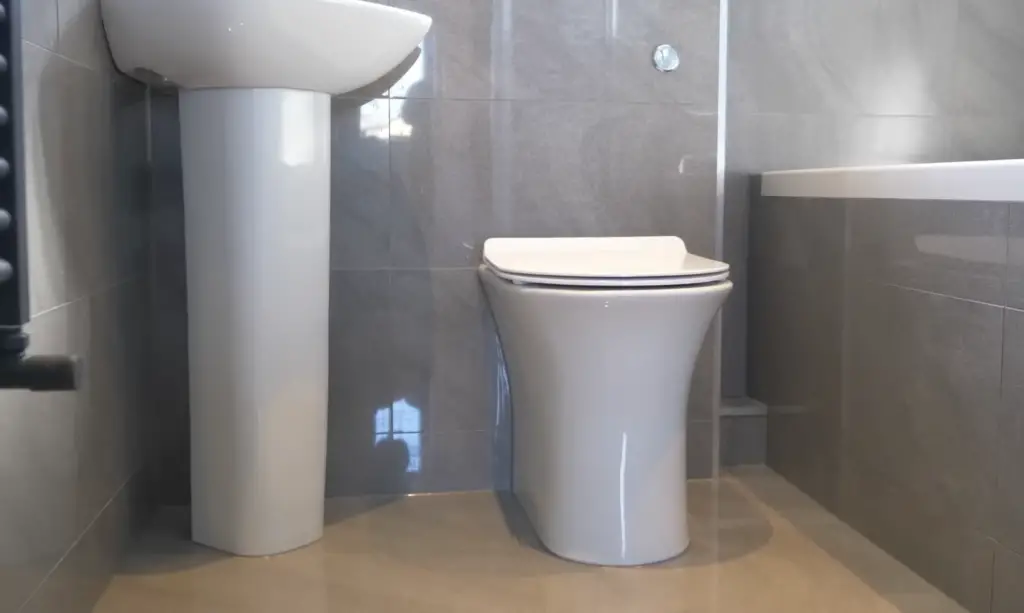
Pros and cons of Porcelain Tile
Pros:
- Porcelain tile is incredibly durable and highly resistant to scratches, chipping, staining, and fading due to its dense composition.
- Porcelain tile is easy to clean – just a simple mop or broom will do the trick!
- Porcelain tile can be used for both indoor and outdoor applications due to its frost-resistance qualities, making it a great choice for all climates.
- The range of designs available with porcelain tiles is practically unlimited – from classic marble patterns to exciting modern textures and colors – you’re sure to find something that works for your home décor aesthetic.
- Porcelain tiles are also extremely affordable compared to other flooring materials like marble or granite, making them an attractive option for budget-conscious homeowners.
Cons:
- Porcelain tile is not as soft and comfortable underfoot as some other flooring options such as carpet or cork, so it may not be ideal for those who are looking for a more plush feel when walking on their floors.
- Installation of porcelain tile can be difficult and time-consuming, so if you’re planning to DIY the project, you should consider having professional help on hand to ensure that everything is done correctly.
- Porcelain tiles can sometimes be slippery when wet, so they may not be the best choice for areas with small children or elderly adults who are more prone to slipping.
- Porcelain tiles may also require extra maintenance over time due to their dense composition, so you’ll want to consider that when deciding if this is the right flooring material for your home.
- Finally, porcelain tile can be quite difficult to repair if it is cracked or chipped, making regular inspections and maintenance all the more important for keeping your floors looking beautiful and damage-free [2].
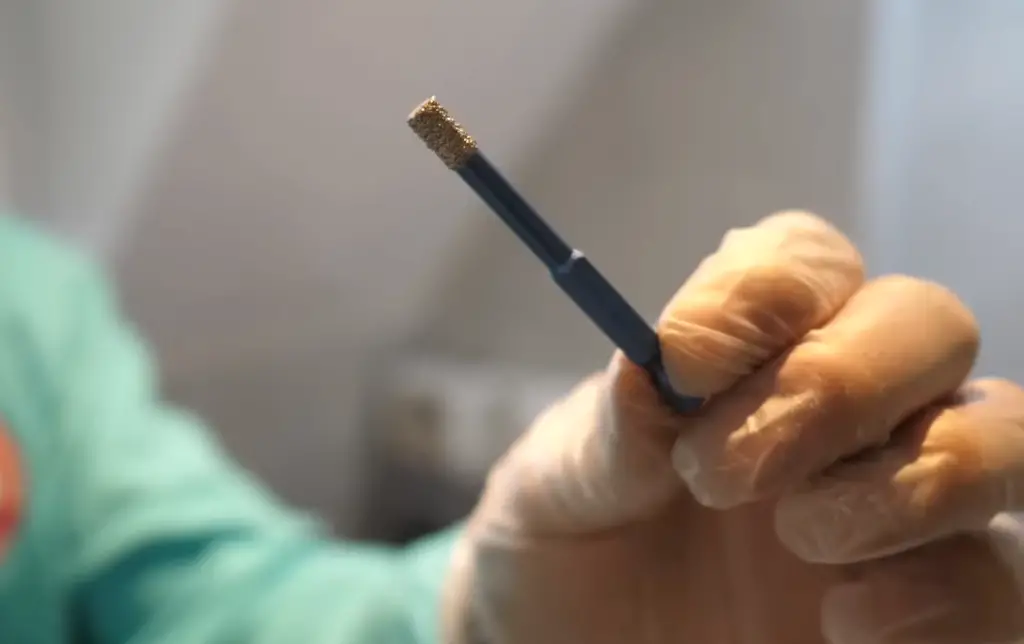
Why can Porcelain Tile be cracked?
Additionally, porcelain tiles are subject to cracking when they’re exposed to extreme temperatures (hot or cold) or excessive moisture. Porcelain tiles may also suffer from impact damage caused by dropping heavy objects on them. Finally, if the surface beneath the tile shifts due to foundation problems or the settling of the house structure, this can create cracks in the porcelain tile.
To prevent cracks in porcelain tile, it’s important to ensure that the installation is done properly — and that there are no potential sources of damage such as extreme temperatures or heavy loads. If you suspect any foundation problems or shifts in the flooring, it’s best to have an inspection done before laying the tiles. Additionally, use a good quality sealant on all grout lines and joints to protect against moisture penetration. With proper installation and maintenance, your porcelain tile should remain crack-free for years to come [3].
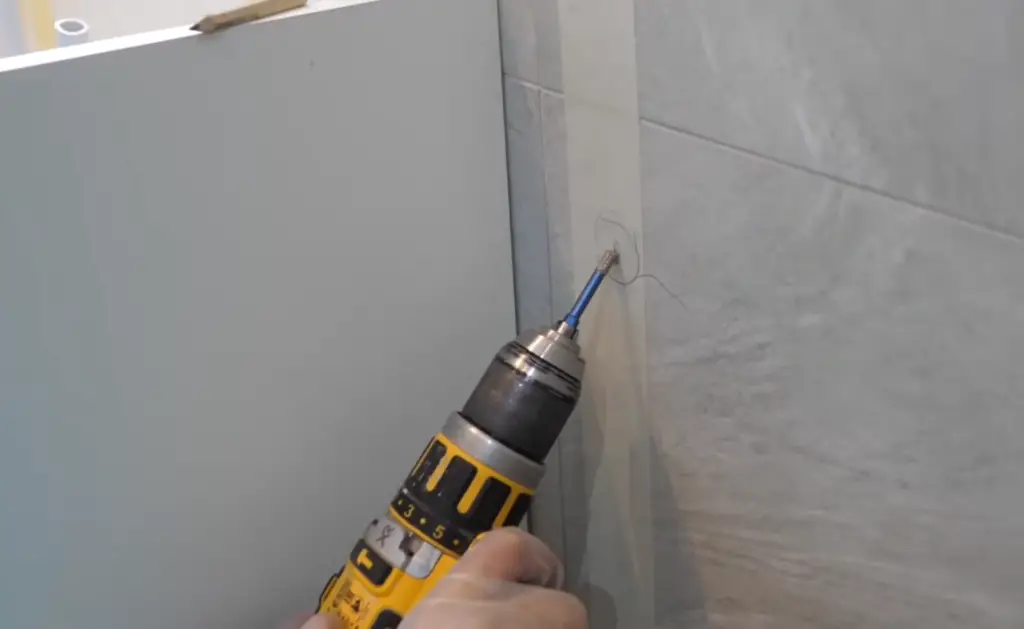
What are the best drill bits for tile?
When selecting the best drill bits for the tile, consider the material of the tile and its thickness. For porcelain or ceramic tiles, diamond-coated drill bits are often recommended as they are both durable and will not overheat while drilling. For stone tiles such as granite or marble, carbide-tipped masonry drill bits work better than conventional steel bits.
When choosing a bit size, go one step bigger than your target hole size to ensure a clean hole without chips at the edges. To reduce pressure on the surface of the tile, use a low speed with moderate pressure when drilling. Lastly, keep in mind that it’s always important to wear safety glasses when drilling and never force your bit through the tile. With the right drill bit, you’ll be able to efficiently and safely complete your project.
How to Drill Through Tile
Step 1: Know Your Tiles
Before you start drilling through tiles, it is important to know the kind of tile you are working with. Ceramic and porcelain tiles are harder than other types, such as those made from natural stone like marble or granite. Knowing the type of tile will help you determine which drill bit and settings to use when drilling into them.
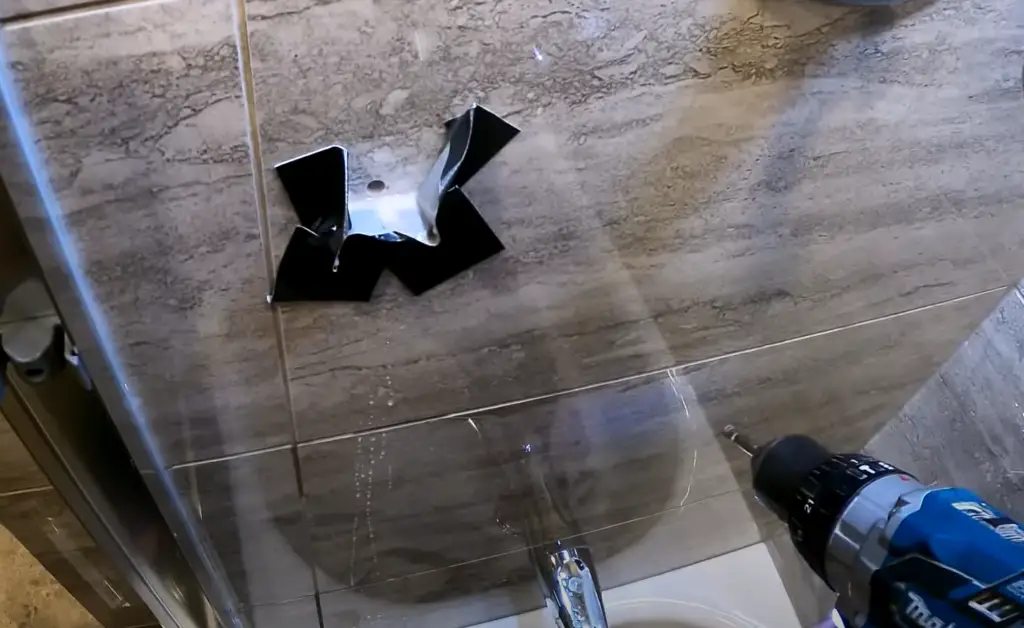
Step 2: Make Sure You Have the Right Drill Bit and Drill
You’ll need a diamond-tipped drill bit when drilling into ceramic or porcelain tiles. Make sure you select the right size drill bit for your project: large enough to go through the tile but small enough so that it doesn’t chip or damage the tile. You can also use an electric drill with variable speed settings, as this will help you adjust the speed of drilling.
Step 3: Measure and Mark the Area
Once you have the right drill bit and drill, measure and mark the area that you need to drill into. Use a pencil or felt-tipped marker for this step. If you’re drilling multiple holes in the tile, use a ruler or template to ensure accuracy.
Step 4: Start Drilling Slowly
When starting to drill through the tile, begin slowly at a low-speed setting. This will reduce the risk of cracking or chipping your tile. As you start making progress, gradually increase the speed of your drilling until it is going through completely.
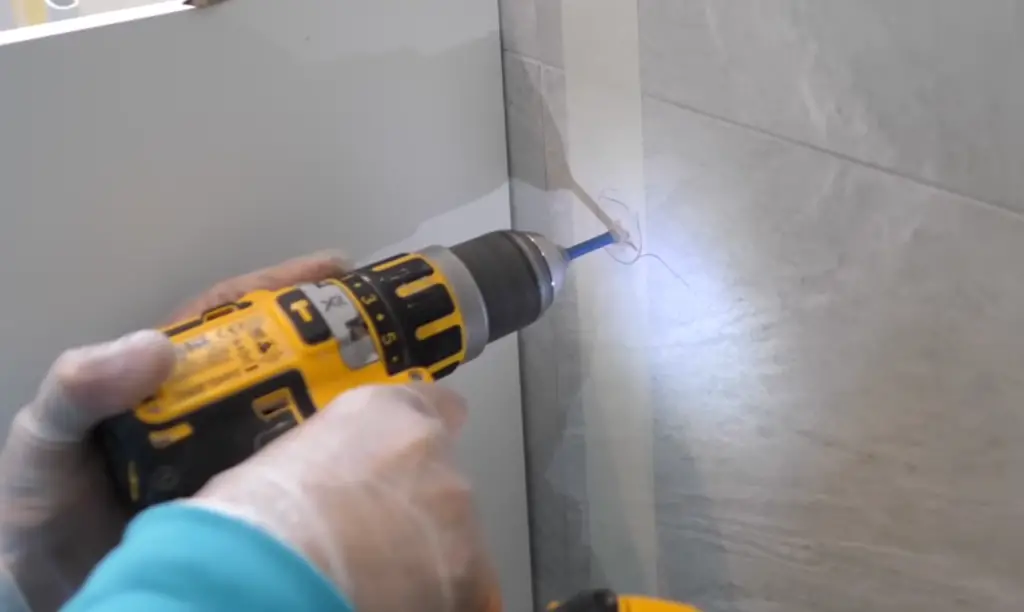
Step 5: Don’t Forget to Cool the Drill Bit
As you drill into the tile, make sure to cool the drill bit with water every few seconds. This will prevent it from overheating and ensure that it is drilling through the tile properly. Additionally, you should wear protective eyewear and a dust mask when drilling into tiles.
Step 6: Clean Up the Area
Once you have finished drilling through the tile, clean up any debris or dust from the area. Use a vacuum to remove as much of it as possible. If there are any chips in the tile, use sandpaper or a file to smooth them out. Finally, seal around the edges of your hole with grout or caulk to protect against water damage.
Following these steps will help ensure that you drill through your tile safely and successfully without damaging it! With the right tools and techniques, you can easily make precise holes in ceramic or porcelain tiles for whatever project you’re working on [4].
How to maintain Porcelain Tile?
When it comes to maintaining porcelain tile, proper cleaning and sealing are essential. To ensure your tiles look their best for years to come, you should sweep or vacuum regularly to remove any dirt or debris that accumulates on the surface of the tile. You can also use a damp mop with mild detergent to clean porcelain tile.
If there is a build-up of grime, you may need to use an abrasive cleaner such as scouring powder or an acid-based solution like vinegar combined with baking soda. However, make sure to do spot tests first and rinse off the area afterward with plain water. Be aware that some abrasive cleaners can damage both glazed and unglazed porcelain tiles, so always check the label before use.
For extra protection and shine, you can apply a sealer to your porcelain tile. This will help prevent stains from seeping into the tile, as well as reduce water absorption and make cleaning easier. Just be sure to follow the instructions on the sealer carefully and wait for the prescribed amount of time before applying it to your floor.
Finally, avoid using harsh chemicals that could damage or discolor your porcelain tile when cleaning it. Using a soft brush for scrubbing is often enough to remove dirt and grime without damaging the surface of your tiles. With proper care and maintenance, your porcelain tile can stay looking great for many years!
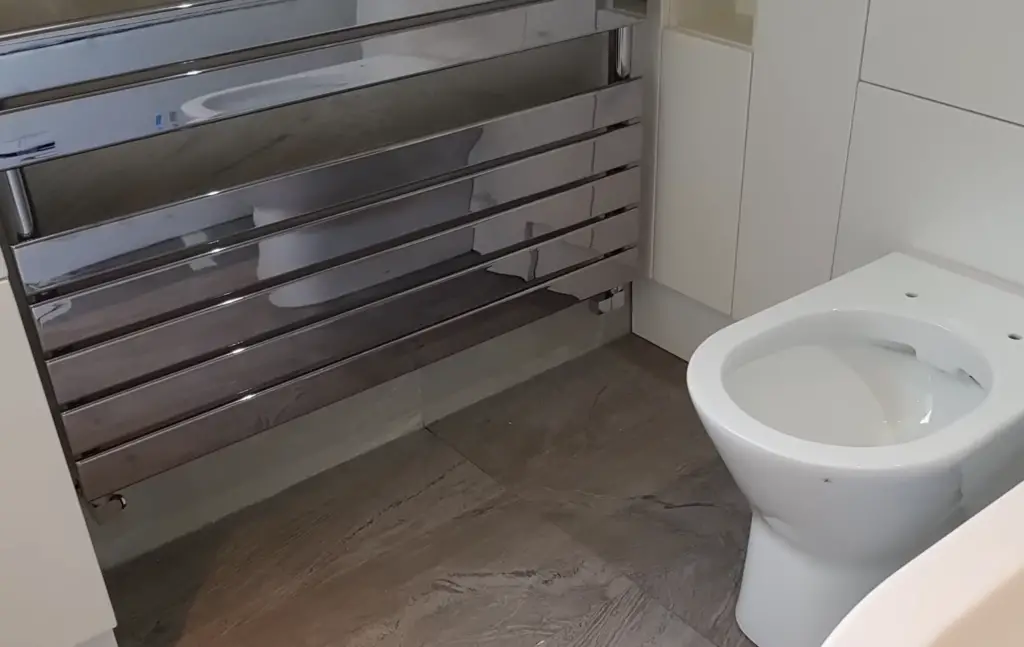
FAQ
How do you drill through porcelain without cracking it?
Drilling through porcelain can be tricky since it’s a brittle material that can crack easily. The first step is to use a diamond-tipped drill bit, as this will help reduce friction and heat buildup while drilling. You should also make sure the drill is set at the correct speed for the size of the hole you need to create. Additionally, start by drilling a small pilot hole before enlarging it to the desired size; this will ensure you don’t overheat or crack the porcelain. Lastly, be sure to always apply gentle pressure when drilling – too much force can cause cracks in your workpiece. With these steps in mind, you should have no problem creating neat, even holes in your porcelain.
What is the best drill bit for porcelain tile?
The best drill bit for porcelain tile is one with a diamond-tipped design. These bits are specifically designed to cut through hard, brittle materials like porcelain without cracking or chipping. Additionally, these bits are also self-sharpening, meaning they don’t have to be replaced as often as other types of drill bits. For the best results, opt for a high-quality diamond-tipped drill bit when drilling through porcelain tile.
What is the easiest way to drill through a porcelain tile?
The easiest way to drill through a porcelain tile is to use an electric drill with a diamond-tipped bit. Make sure the bit is sharp and set the drill speed to low or medium, depending on the size of the hole you need to create. Additionally, start by drilling a small pilot hole first before enlarging it – this will help reduce cracking and heat buildup. Finally, always apply gentle pressure when drilling; too much force can cause cracks in your workpiece. By following these steps, you should have no problem creating clean holes in your porcelain tile without any chipping or damage.
How do I stop my tile from cracking when I drill?
The key to avoiding cracking when drilling into porcelain tile is to use the right tools and techniques. First, make sure you’re using a diamond-tipped drill bit as this will reduce friction and heat buildup while drilling. Additionally, always start by drilling a small pilot hole before enlarging it; this helps prevent cracking and prevents too much heat from building up in one area of your tile. Finally, apply gentle pressure when drilling – too much force can cause cracks in your workpiece. With these steps in mind, you should have no problem creating neat holes without any chipping or damage to your porcelain tile.
Can I use a regular drill bit on porcelain?
Using a regular drill bit on porcelain is not recommended. Porcelain is a brittle material that can easily crack or chip if drilled with the wrong type of bit. Instead, opt for a diamond-tipped drill bit as this will help reduce friction and heat buildup while drilling, making it easier to create clean holes without any damage to your porcelain tile.
Can I use an impact driver to drill through porcelain?
An impact driver can be used to drill through the porcelain, but with caution. Impact drivers are powerful tools that generate high amounts of torque, so you should always apply gentle pressure when drilling and use a low or medium setting on the tool’s speed setting. Additionally, make sure you’re using a diamond-tipped drill bit as this will help reduce heat buildup and friction while drilling. With these steps in mind, you should have no problem creating neat holes without any chipping or damage to your porcelain tile.
Can I use an angle grinder to cut a hole in porcelain?
An angle grinder is not recommended for cutting a hole in porcelain. Porcelain is a brittle material that can easily chip or crack if it is not handled properly. Instead, opt for an electric drill with a diamond-tipped bit as these are specifically designed to cut through hard materials like porcelain without causing any damage.
With these steps in mind, you should have no problem creating neat holes without any chipping or damage to your porcelain tile.
Why do tiles crack when drilling?
Tiles can crack when drilling if the wrong type of drill bit is used, or if too much force is applied. Porcelain is a brittle material that can easily chip or crack if not handled correctly. As such, it’s important to always use a diamond-tipped drill bit as this will help reduce friction and heat buildup while drilling. Additionally, start by drilling a small pilot hole first before enlarging it – this will prevent cracking and keep heat buildup in one spot from becoming excessive. Finally, always apply gentle pressure when drilling; too much force can cause cracks in your workpiece. With these steps in mind, you should have no problem creating neat holes without any chipping or damage to your porcelain tile.
Should you use a hammer drill when drilling tile?
No, you should not use a hammer drill when drilling tile, as this can cause damage to the surface of the tile. Hammer drills generate high amounts of torque and vibration which can crack your porcelain tile. Instead, opt for an electric drill with a diamond-tipped bit as these are specifically designed to cut through hard materials like porcelain without causing any damage. Additionally, make sure the tool’s speed setting is set to low or medium depending on the size of the hole you need to create. With these steps in mind, you should have no problem creating neat holes without any chipping or damage to your porcelain tile.
Can I drill into ceramic tiles?
Yes, you can drill into ceramic tiles, although the process is a bit more complicated than drilling into porcelain tiles. Ceramic tiles are softer than porcelain and require special diamond-tipped drill bits to ensure that your workpiece does not chip or crack during the drilling process. Additionally, always start by drilling a small pilot hole first before enlarging it – this will reduce cracking and heat buildup in one spot from becoming excessive. Finally, apply gentle pressure when drilling; too much force can cause chips in your workpiece.
Useful Video: How To Drill Through Hard Porcelain Tile Using Cheap Drill Bits | AKA The Tape Trick
Conclusion
Drilling through porcelain tile without cracking is possible, but it requires extreme amounts of caution and the right tools. With a diamond-tipped drill bit, water to act as a lubricant and a steady hand, you can successfully drill through porcelain tiles without causing any damage. You should also consider hiring a professional for the job if you’re not confident in your drilling skills. The cost of repair or replacement for cracked porcelain tiles can be substantial, so it’s always beneficial to invest in proper drilling techniques. Taking these steps will ensure that your tile project turns out just the way you plan!
References
- https://www.realsimple.com/home-organizing/decorating/types-of-tiles
- https://stonecenters.com/blog/porcelain-tiles-for-flooring-pros-and-cons
- https://www.montolit.com/en/blog/tips-to-avoid-cracks-or-broken-in-porcelain-tiles-already-laid/
- https://www.tilemountain.co.uk/blog/how-to-drill-through-tiles/






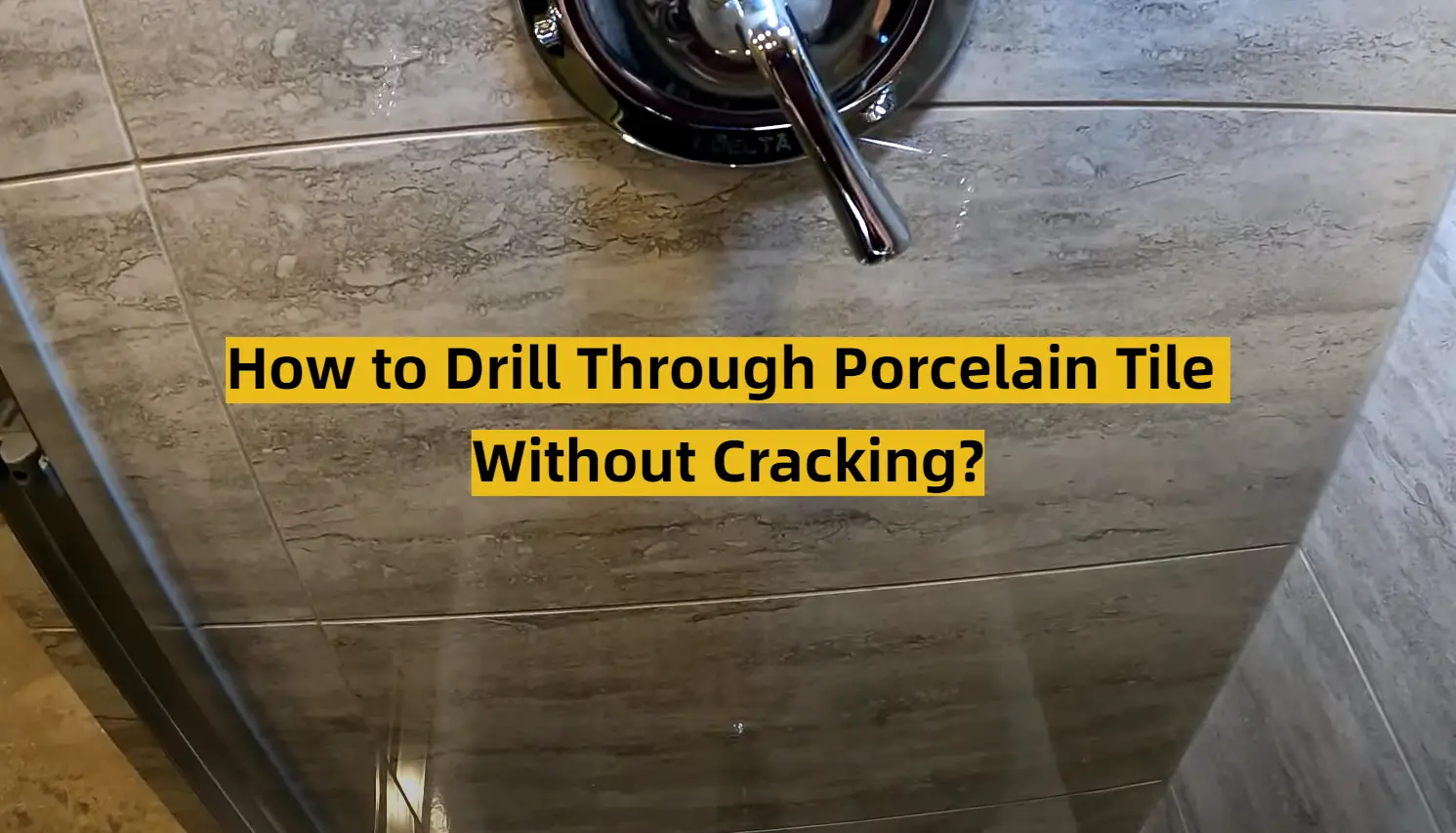






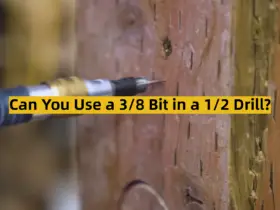
Leave a Reply